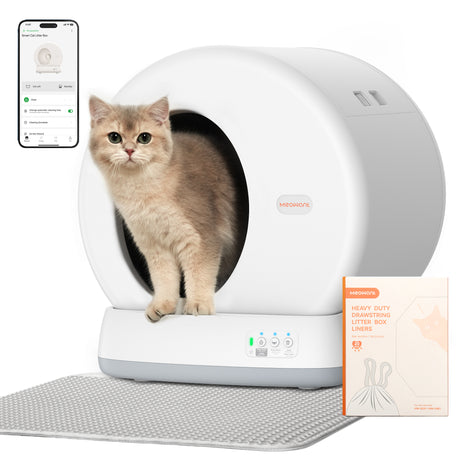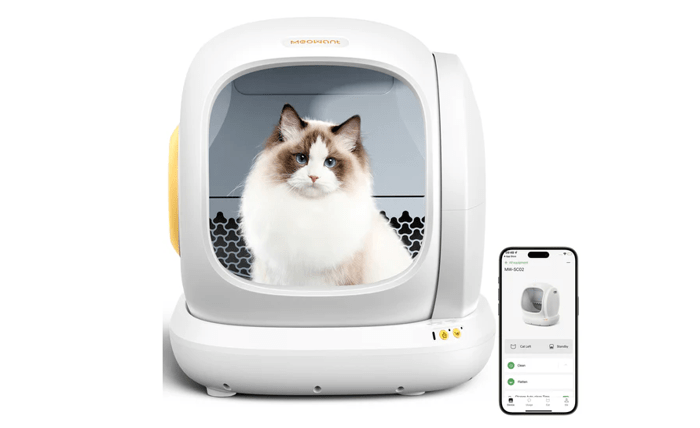As cats enter their golden years, their physical abilities and comfort needs change significantly. Arthritis, reduced mobility, and joint stiffness become common challenges that affect even the simplest daily activities, including using the litter box. Many senior cats begin avoiding their litter boxes not out of behavioral issues, but because accessing them has become painful or difficult. This can lead to accidents around the home and unnecessary stress for both cats and their owners.
Understanding Elderly Cat Needs
Senior cats face distinct physical challenges that directly impact their litter box habits. Arthritis affects approximately 90% of cats over twelve years old, causing joint pain and stiffness that makes jumping or climbing increasingly difficult. Their hind leg strength diminishes, balance becomes less reliable, and they may develop conditions like kidney disease that increase bathroom frequency. Vision problems can make navigating high-sided or covered boxes challenging, while cognitive decline might cause confusion about location or purpose.
These age-related changes mean traditional litter boxes often become obstacles rather than functional necessities. A box that worked perfectly for years suddenly presents barriers—high walls require painful leg lifts, unstable bases threaten falls, and cramped interiors make turning difficult for arthritic spines. Recognizing these limitations is the first step toward providing appropriate accommodations. The right litter box acknowledges that your senior cat hasn’t forgotten their training; their body simply needs different support to maintain the same habits comfortably and safely.
Low Entry Point
The single most critical feature for elderly cat litter boxes is a low entry threshold, ideally three inches or less. This minimal height allows cats with arthritis or weakened muscles to step in without straining joints or lifting painful legs. Many senior-specific designs feature one side that’s completely cut down or ramped, creating an accessible entrance while maintaining higher walls on other sides for containment. This simple modification can mean the difference between consistent litter box use and accidents caused by access difficulty rather than behavioral problems.
Safety Features
Beyond accessibility, safety considerations become paramount for aging cats whose reflexes and balance have deteriorated. Rounded corners prevent injuries from bumping or misjudged turns, while adequate floor space allows cats to position themselves comfortably without feeling trapped. The box should remain stable when entered from any angle, preventing tipping that could frighten or injure an unsteady cat. Avoid covered boxes unless absolutely necessary, as they restrict visibility and can disorient cats with cognitive decline.
Textured interiors provide secure footing without being abrasive to sensitive paws, and shallow litter depth—around two inches—reduces the effort needed to dig while still allowing natural covering behaviors. These thoughtful details create an environment where elderly cats feel secure and capable, encouraging continued proper use despite physical limitations.
Top Features to Look For
When selecting a litter box for your elderly cat, prioritize features that address their specific physical limitations while simplifying your care routine. The ideal senior cat litter box combines accessibility with practical design elements that accommodate aging bodies. Look for spacious interiors that allow cats to turn around easily without contorting stiff spines—a minimum of 20 inches in length provides adequate maneuvering room. The material should be durable yet lightweight enough for you to move during cleaning without excessive effort. Avoid boxes with intricate corners or crevices where waste can accumulate, as these complicate sanitation and may harbor bacteria that could affect cats with weakened immune systems. Transparent or light-colored materials help you monitor litter condition and spot health issues like blood in urine more quickly. Consider placement accessibility too—the box should fit comfortably in quiet, easily reached locations on the same floor level your cat frequents, eliminating stairs whenever possible. Open-top designs typically work best for seniors, providing unrestricted entry from multiple angles and preventing the claustrophobic feeling that can deter cats with vision or cognitive issues. These foundational features create a user-friendly environment that respects your aging cat’s changing capabilities while maintaining hygiene standards essential for their health.
Non-Slip Base
A stable, non-slip base prevents the box from sliding when your cat enters or exits, which is crucial for those with balance issues or weakened muscles. Rubber feet or textured bottom surfaces keep the box firmly planted, giving cats confidence to step in without fear of movement beneath them. Brands like Meowant have incorporated anti-slip features into their designs, recognizing that stability is essential for senior cat safety and confidence during bathroom routines.
Easy Cleaning
Senior cats often require more frequent litter box maintenance due to increased bathroom visits from age-related conditions. Choose boxes with smooth, non-porous surfaces that resist odor absorption and allow quick waste removal. Removable liners or boxes with rounded interior corners eliminate scrubbing difficult angles. Some designs feature antimicrobial coatings that inhibit bacterial growth between deep cleanings. The easier your cleaning routine, the more consistently you’ll maintain the fresh environment that encourages continued use and protects your elderly cat’s sensitive health.
Comfortable Interior
The interior space should accommodate your cat’s full body comfortably without requiring crouching or compression that strains arthritic joints. Smooth interior walls without seams or ridges prevent snagging on delicate older skin, while slightly textured floors provide secure footing without abrasiveness. Adequate headroom in open designs lets cats maintain natural posture during elimination, reducing strain on hips and spine. The litter itself should be soft, dust-free clay or paper-based formulas that are gentle on sensitive paws and respiratory systems compromised by age.

Customer Support and Reviews
When investing in a litter box designed for elderly cats, customer support and verified user reviews provide invaluable insights that specifications alone cannot convey. Real-world experiences from other senior cat owners reveal how products perform over months of daily use, highlighting durability issues, design flaws, or unexpected benefits that only emerge with time. Look for patterns in feedback rather than isolated complaints—consistent mentions of cracking plastic, difficult assembly, or inadequate sizing indicate genuine concerns worth heeding. Positive reviews detailing improved litter box habits or reduced accidents from cats with specific conditions like arthritis offer reassurance that the design truly addresses senior needs.
Responsive customer support becomes especially important when purchasing specialized products, as questions about dimensions, material safety, or suitability for particular health conditions may arise. Companies that provide detailed responses, replacement parts for wear-prone components, and troubleshooting guidance demonstrate commitment beyond the initial sale. This ongoing support proves valuable when adapting the litter box setup as your cat’s condition progresses or when unexpected issues emerge during use.
Customer Feedback
Prioritize reviews from verified purchasers who specifically mention using the box for senior or disabled cats, as their experiences directly reflect your situation. Pay attention to comments about long-term durability, ease of entry for cats with mobility issues, and whether the design truly simplified bathroom routines. Photos in reviews can reveal actual size relative to average cats and show how the product ages. Negative feedback about sharp edges, instability, or difficult cleaning despite marketing claims helps you avoid costly mistakes and frustration for both you and your elderly companion.
Warranty and Return Policy
A solid warranty covering manufacturing defects for at least six months to a year indicates manufacturer confidence in product quality and provides protection for your investment. Equally important is a reasonable return policy allowing you to test the box with your cat—some seniors reject new boxes regardless of design, and a flexible return window lets you try alternatives without financial loss. Companies offering satisfaction guarantees or trial periods demonstrate understanding that senior cat needs vary individually, and what works for one elderly cat may not suit another despite similar conditions.
Providing Comfort for Your Senior Cat
Selecting the right litter box for your elderly cat is one of the most compassionate decisions you can make during their senior years. The perfect box respects their physical limitations while preserving their independence and dignity. By prioritizing low entry points, stable construction, spacious interiors, and easy maintenance, you create an environment where your aging companion can continue their natural bathroom habits without pain or anxiety. Remember that the transition may require patience—introduce new boxes gradually, place them in familiar locations, and consider keeping multiple options on each floor level your cat frequents.
Your elderly cat has spent years as a loyal companion, and now they depend on you to adapt their environment to their changing needs. The investment in a self cleaning litter box pays dividends in reduced accidents, decreased stress, and improved quality of life for both of you. Monitor your cat’s usage patterns and remain flexible, as their needs may evolve further with advancing age. With the right litter box and your attentive care, your senior cat can maintain comfort and confidence throughout their golden years, ensuring their final chapter is filled with the same security and love they’ve always known.






